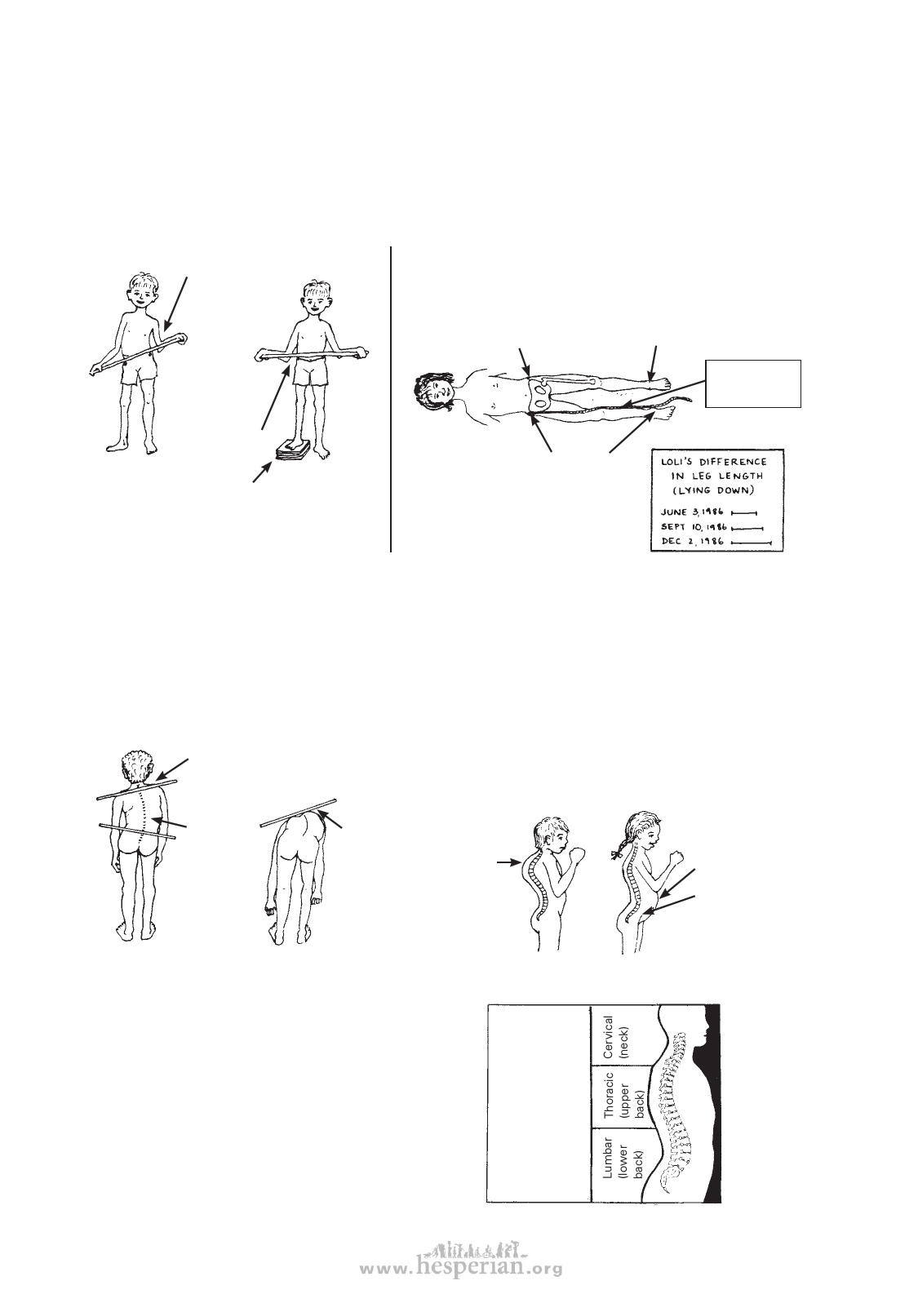
34 chapter 4
Other things to check in a physical examination
Difference in leg length. When one leg is weaker, it usually grows slower, and becomes
shorter than the other leg. An extra thick sole on the sandal might help the child stand
straighter, limp less, and avoid curving of the spine. A short leg may also be a sign of a
dislocated hip. So it helps to check for, and to measure, difference in leg length. (For tests,
see p. 155 and 156.)
If the child can stand,
look for a
tilt of the
hip bones,
then raise
the foot of
the short
leg until
the hips
are level.
and measure the difference.
Curve of the spine
If she cannot stand,
have her lie as straight as she can. Feel and
then mark, on both sides of her body, the bony lumps
at the top front
corner of the hip bone
and on the
inner ankle.
Pass tape
along inner
side of knee.
Then measure from here to here
with a tape measure or string.
Measure each leg and record
the difference. If you used a
string, just draw lines on your
record sheet showing the actual
difference in leg length.
Especially when one leg is shorter or there are signs of muscle imbalance in the
stomach or back, be sure to check for abnormal curve of the spine (back bone). The 3
main types of spinal curve (which may occur separately or in combination) are:
Sideways curve (scoliosis)
shoulder
higher on
side of
short leg
Check for
weaker
muscles on
this side of
spine.
Have the
child bend
over. Check
for a rib
for a rib
hump on
outer side of
curve.
Hunch back,
rounded back
(kyphosis)
May result
from weak
back
muscles,
or poor
posture.
Swayback
(lordosis)
May result
from weak
stomach
muscles or
bent-hip
contractures.
(Be sure to
check for
these.)
Some spinal curves will straighten when
a child changes her position, lies down,
or bends over. Other spinal curves will
not straighten, and these are usually
more serious. For more information
about examining spinal curve and
deformities of the back, see Chapter 20.
Normal
position
of spine
showing
the 3 main
divisions
of the
backbone.
Disabled village Children